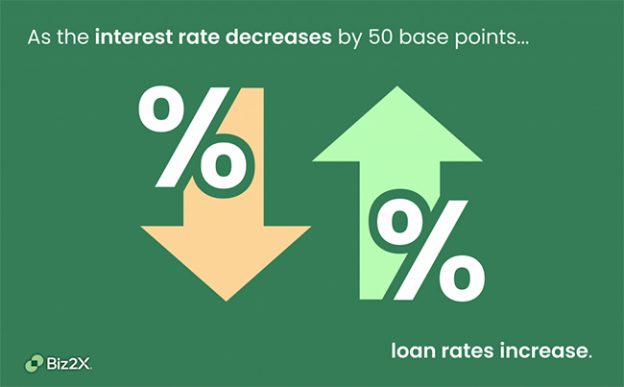The Federal Reserve announced its lowering interest rates for the first time in over 4 years last week, sparking relief for consumers and small business owners. This rate drop, and future rate decreases, are likely to spur new inquiries to banks and credit unions around the country.
Although a good problem to have, bankers and underwriters may see a wave of new clients coming in to capture cheaper lending. This could put pressure on both workers and your institution.
Here’s what you need to know about the changing interest rate environment and how it could impact your organization.
Applications In from Eager Business Owners
Small businesses have been negatively impacted by the Fed’s higher for longer interest rate campaign over the last few years. It has put many in a position to put off further investment, and even cut costs by laying off workers at larger clips than larger enterprises.
That tide could be turning as the Fed begins lowering rates to stimulate spending and borrowing. More borrowing means more pressure on financial institutions to underwrite efficiently. Biz2X data shows that up to 70% of business owners typically apply for a loan outside of banking hours.
And with small business formation surging in 2024, the positive interest rate news will bring a vastly different credit profile.
Risk Profiles Simultaneously Changing
There are several possibilities financial institutions need to consider in a changing interest rate environment.
- New applicants with varying credit profiles: This influx can include applicants with varying creditworthiness, potentially increasing the proportion of higher-risk borrowers.
- Quantity and quality: Lower rates can compress banks’ profit margins, prompting them to seek higher volumes of loans to maintain profitability, which might lead to more lenient lending standards. For underwriters, this can potentially create a struggle of growing the loan portfolio and maintaining best practices to avoid an uptick in defaults.
Revitalizing Your Portfolio
Bank leaders are now rethinking their approach to underwriting more loans as the Fed has signaled more rate cuts are likely to happen in the coming months.
Here are some tips to consider as you look to bolster your portfolio of loans:
Maintaining a healthy loan portfolio during periods of lower interest rates requires a strategic approach. Here are some key practices:
- Rigorous Risk Assessment: Continue to apply stringent credit evaluation criteria to ensure that only creditworthy borrowers are approved.
- Diversification: Spread the risk by diversifying the types of loans and industries you lend to, reducing the impact of any single sector’s downturn.
- Monitoring and Review: Regularly monitor the performance of the loan portfolio and conduct periodic reviews to identify and address potential issues early.
- Adjusting Loan Terms: Consider adjusting loan terms, such as shorter durations or higher collateral requirements, to mitigate risk.
- Leveraging Technology: Use advanced data analytics and AI to enhance risk assessment and identify trends that could affect loan performance.
By implementing these practices, banks can better navigate the challenges of lower interest rates while maintaining a robust and healthy loan portfolio.
Looking ahead
The prospect of future interest rate drops presents both opportunities and challenges for financial institutions. While lower rates can stimulate borrowing and economic activity, they also necessitate careful risk management and strategic planning to maintain financial stability.
To get started on the Biz2X platform, reach out to a Biz2X expert today to learn about the right solution for your lending needs.















